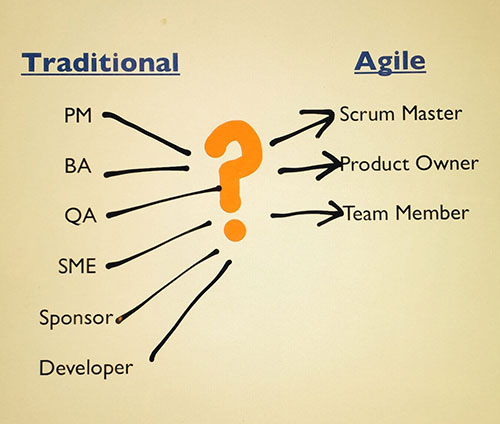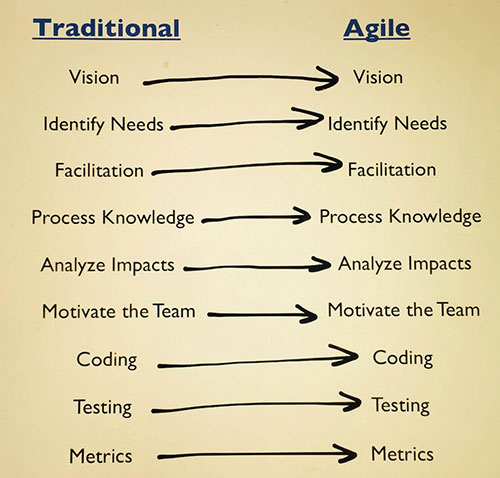It’s Not Personal – It’s Only Business
As business analysts we’ve typically all been exposed to the process of a document peer review. A well-structured and dedicated peer review process is not only a sanity check to maintain healthy documentation practices; but also be a great continuous training exercise for business analysts to learn new ways of approaching their documentation and also learn from the seasoned expertise of their peer counterparts. It provides a pulse of where improvement can occur across your enterprise and provide strong evidence for where strengths exist.
Business Analysts are by-and-large very meticulous about document review and will find the smallest error or inconsistency and use it to pull the document apart methodically piece-by-piece; leaving nothing but the draft version smeared in redline corrections and comment bubbles in the margin. It’s kind of a gift we all have. The ability to find fault in a document not our own is far easier than writing a document in which others will not find fault.
Don’t Take it Personally
One of the most common responses to peer review critiques I have encountered in my experience is the frustration and outrage caused by the document author believing that the review comments are in some way personal. As business analyst professionals, we can never assume that document criticism is a personal attack or that the critique has been made as some form of vendetta for a previous transgression; known or unknown. As a business analyst, this is an unhealthy practice that will only cause constant frustration and tension between you and your peers and adds no value to the team or your advancement in business analytics. Opportunities for improvement come in many forms; peer review is one of those forms; even if the comments sometimes reveal difficult truths about documentation weaknesses.
A Real-Life Example
When I first started, I was so eager to do a good job and prove that hiring me for a business analyst position was the right move; I worked tirelessly on my first assignment, dotting every ‘i’ and crossing every ‘t’. When I sent out my first document for review, I thought I did pretty well and was quite proud of the work I had done; until I got the comments back from my peers. Some were very positive; others were simply clarification questions and others were (what I thought at the time) downright mean. I received some incredible advice from my then boss (now colleague) who suggested I reassess and think about it not from my perspective, but from the reviewer’s perspective. I did this and realized that none of their comments could possibly be personal, and I was being completely irrational. I reevaluated my document and addressed the comments. Some I agreed with and corrected and others I responded to with justification as to why they should not change. My own ego, vanity and desire to do well blinded me from seeing the validity of the contributions of others and gave me the initial feeling that I had somehow failed.
How Peer Reviews can help
Now that I have been in the analyst realm for a while, one of the things I look forward to with having my documents reviewed by peers is the experience and insight I gain from others who may have been at this game longer or have a different background or perspective that can add to my own and provide me with additional information to add to my documentation. Documentation audiences range in comprehension, so the more concise documentation is, the less misinterpretation will occur with the content of any documentation. In my years as a business analyst, systems analyst and solution analyst, I have never seen a first draft document go through a peer review without encountering some kind of comment, question, grammar correction or suggestion to content. No analyst is perfect, and no document is ever going to be perfect. Someone will always have something to say about the document; whether it is content, layout or even something as trivial as font type, there’s always a way to improve or something to elaborate on and there will always be someone who has something negative to see; even if it is minor.
How to set yourself up for success
There are a number of steps we can take as analysts to avoid those minor criticisms and provide confidence that our documents are of high-quality the first time out; while maintaining the understanding that comments and criticism are inevitable.
- Spell Check – If you’re using MS Word, it’s a button…Just click it.
- Grammar Check –MS Word has a feature; it’s not entirely accurate all the time but catches common mistakes.
- Make a checklist of common things people forget to change in their documents and start checking off items. Some common mistakes are:
- Version Number
- Page Numbers
- Revision History
- Table of Contents
- Formatting
- Consider your audience – Sometimes you have to tailor your document to a different level; whether higher or lower. What type of voice are you using; passive, assertive?
- Put your document through the process of questioning every requirement. Is it clear? Is it unambiguous?
- Avoid using acronyms without first defining them
- Do your process flows match your requirements (if applicable)
- Look at your document objectively
- 9. Put it down for a while, do something else and revisit it. A fresh mind can lend perspective
There is no definitive list that we can put together than can aid us in writing a perfect document. While we can review our work over and over again, we will always have the potential of missing something. Sometimes it will be something so minor it’s hardly worth mentioning and other times it’s a valid contribution we must consider revising our documents, making a higher quality, more concise final product. We must remember that there is always going to be someone with more experience or someone that is a radical grammar cop or even someone who doesn’t quite understand and needs clarification. We can always do things better, and we must continuously find new and better ways to get through our work and find success. Learning from each peer review session and remembering those comments and critiques for the future, shows that we are improving and making an effort to evolve as business analysts. I am sure there are plenty of things forgotten in this article, and this topic has been well lamented in the analyst community. Through all of the perils that a document review session with our peers can present us with, we cannot allow ourselves to believe that it is ever personal. It’s not personal, it’s only business.






